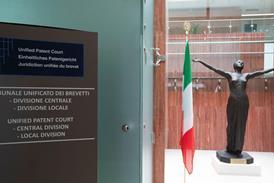A High Court judge has backed the use of predictive coding in e-disclosure to partially automate the review process.
The landmark ruling marks the first time a UK court has officially given its approval for the use of this software.
Master Matthews said predictive coding could be used in the case of Pyrrho Investments v MWB Property, in light of the ‘enormous’ expense of manually searching through the three million electronic documents involved.
The technology, which analyses documents and ‘scores’ them for relevance to the issues in the case, was first approved in the US in 2013 and was endorsed in Ireland last year. But it is still rarely used in the UK, which was why the parties sought judicial approval despite both sides agreeing to use it in the disclosure process.
Edward Spencer (pictured), an associate at Taylor Wessing, took the court through the cost savings that could be gained from using the software. He said that although most litigators know about the technology, lawyers in the UK have so far been cautious about using it.
He told the Gazette: ‘Our default position is to see every single document before it goes to the other side. But it is a matter of proportionality really. The Jackson reforms mean the focus is much more on cost management.’
He said the ruling could make it more common to use predictive coding in cases where this would be appropriate, and might mean lawyers will have to become more comfortable using the technology.
Matthews found that the experience in other jurisdictions suggested that predictive coding can be useful, and said that there is greater consistency in having a computer review documents.
He also said that the cost of manually searching the documents in the case would be several million pounds at least, whereas predictive coding was estimated to cost between £197,705 and £489,869.
He ruled that due to the cost saving and size of the claim, it was suitable to use the software in this case.



















![Emily-1[17]](https://d1d8vslyhr7rdg.cloudfront.net/Pictures/274x183/3/1/7/120317_emily117_695594_crop.jpg)





1 Reader's comment